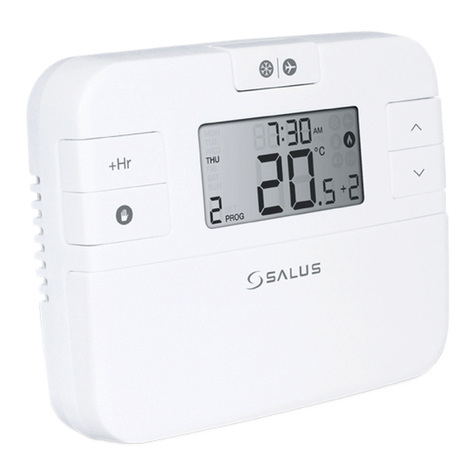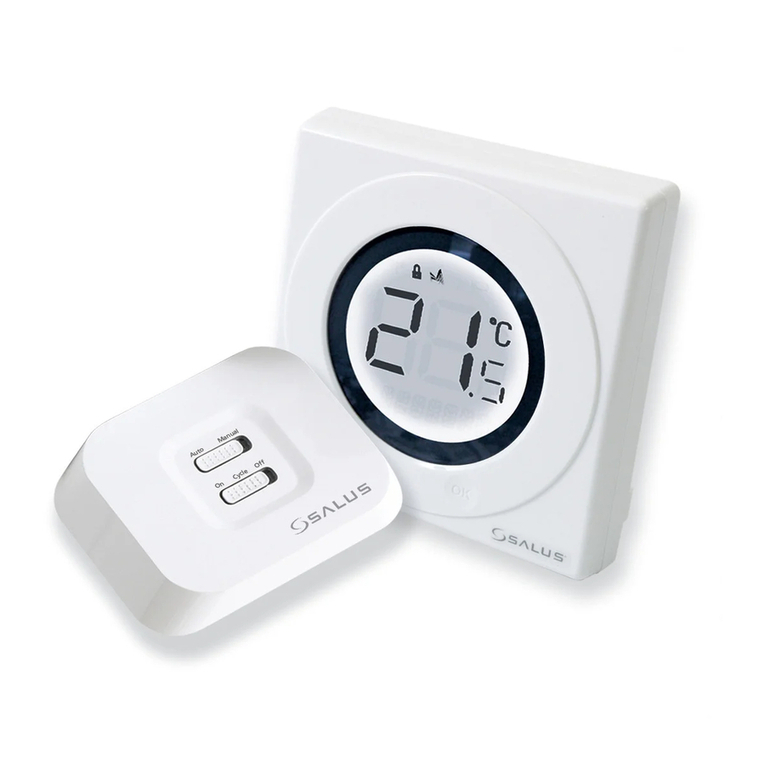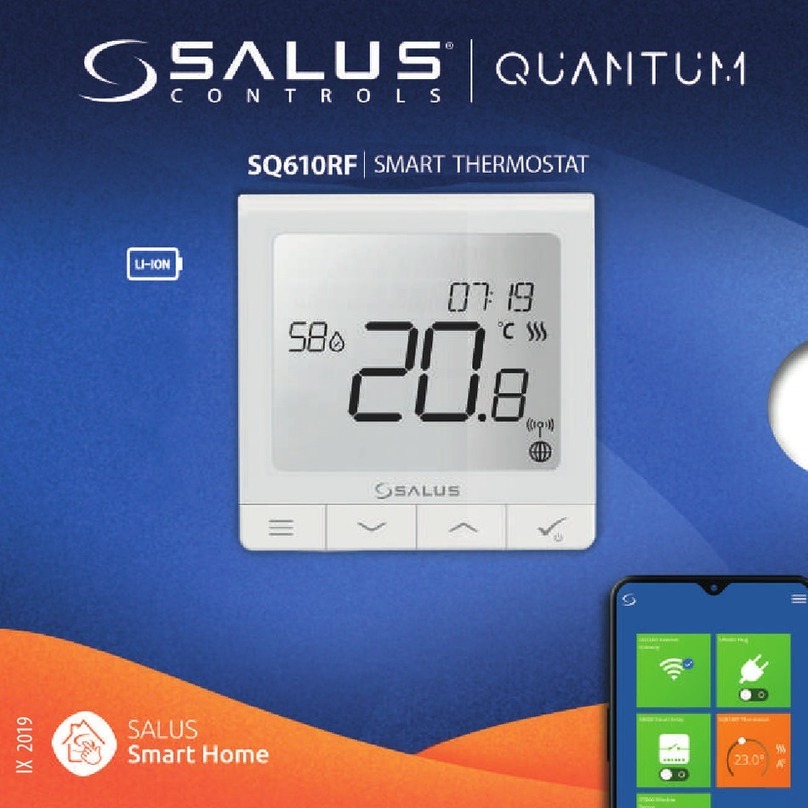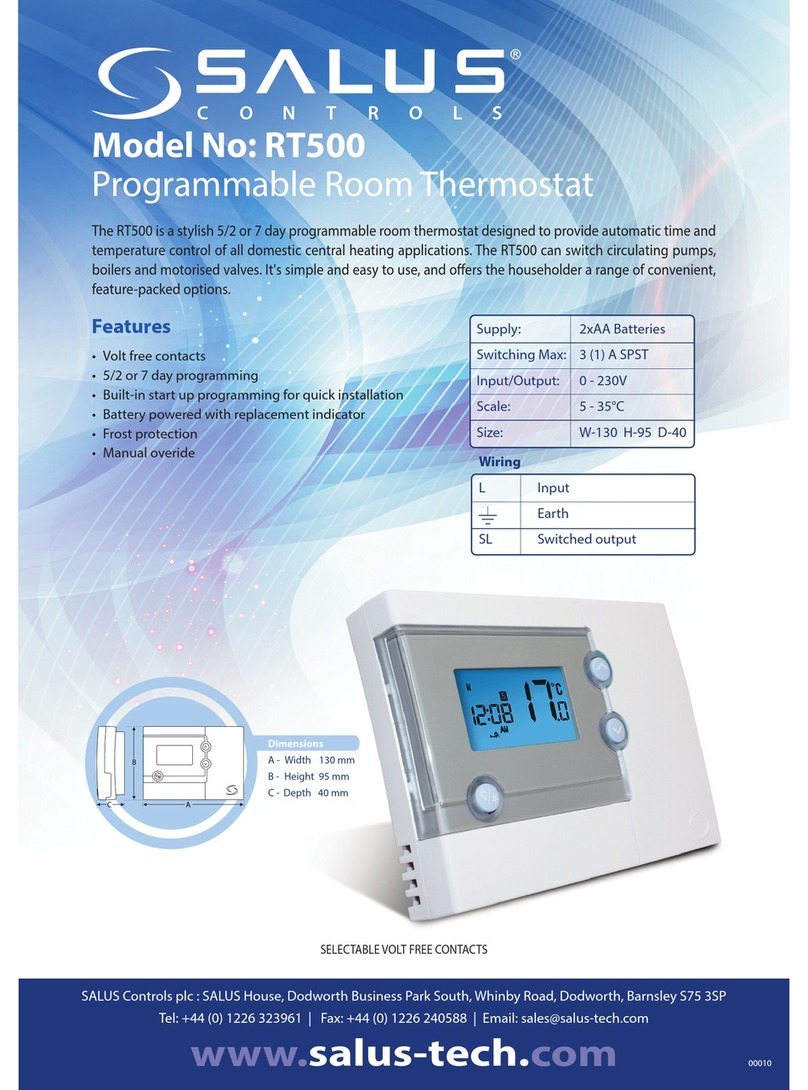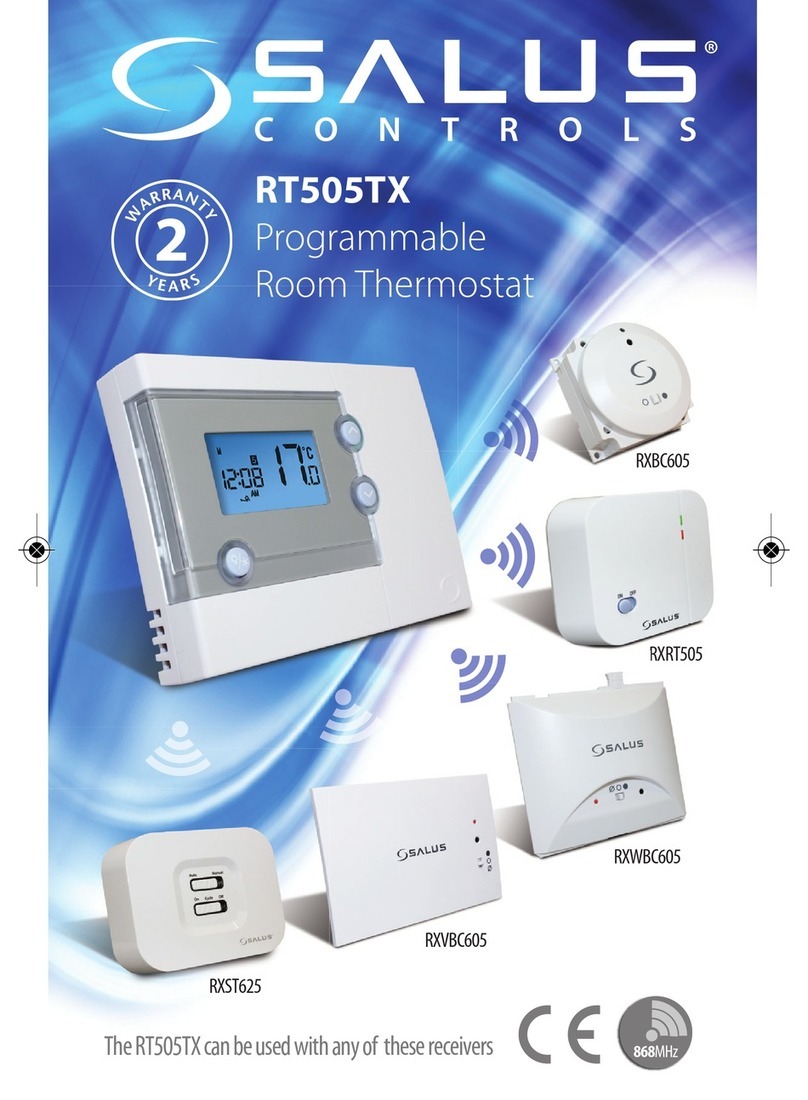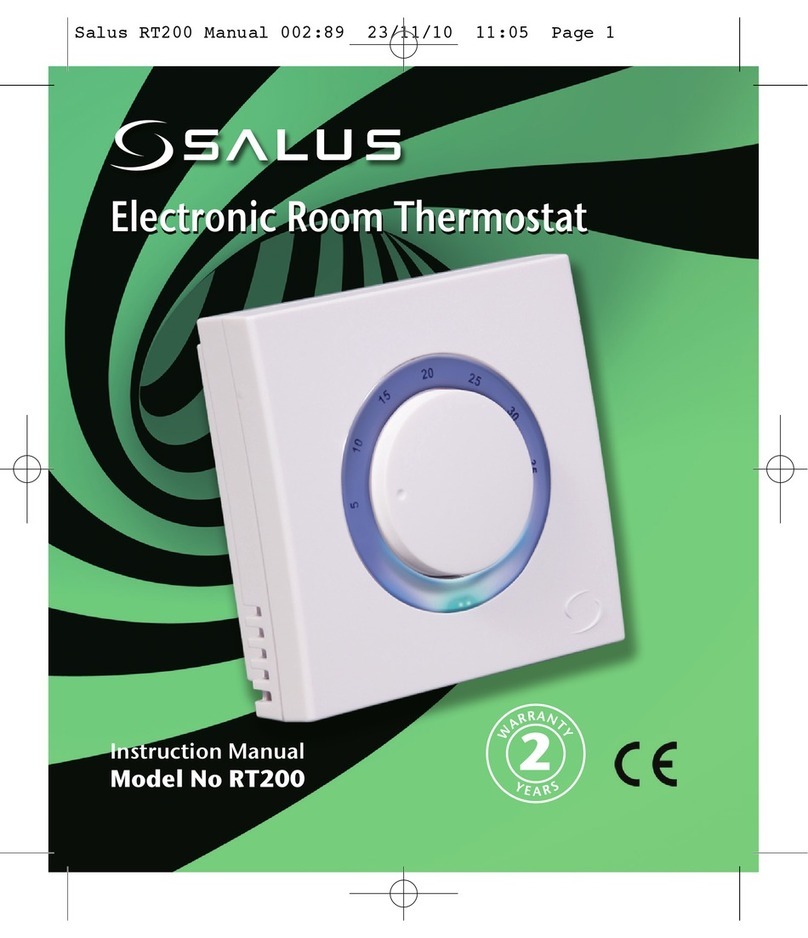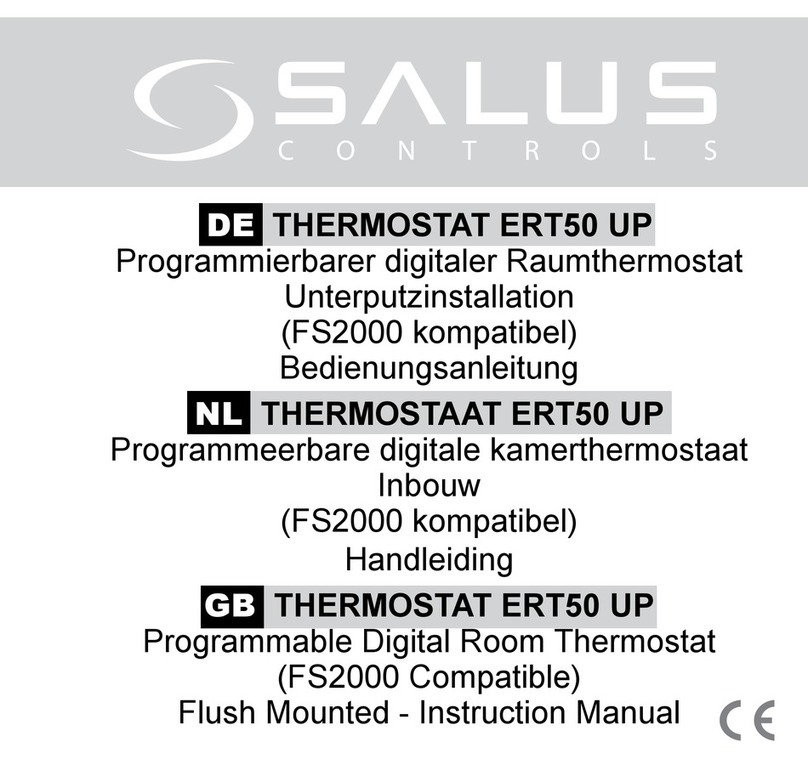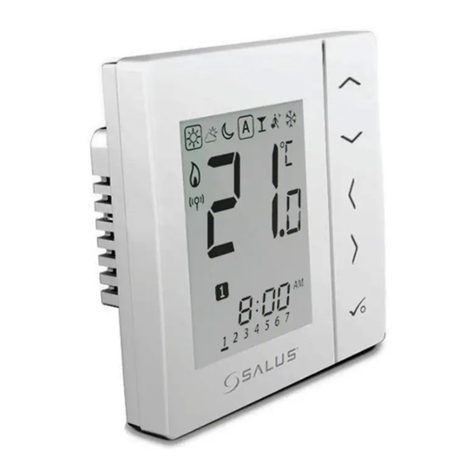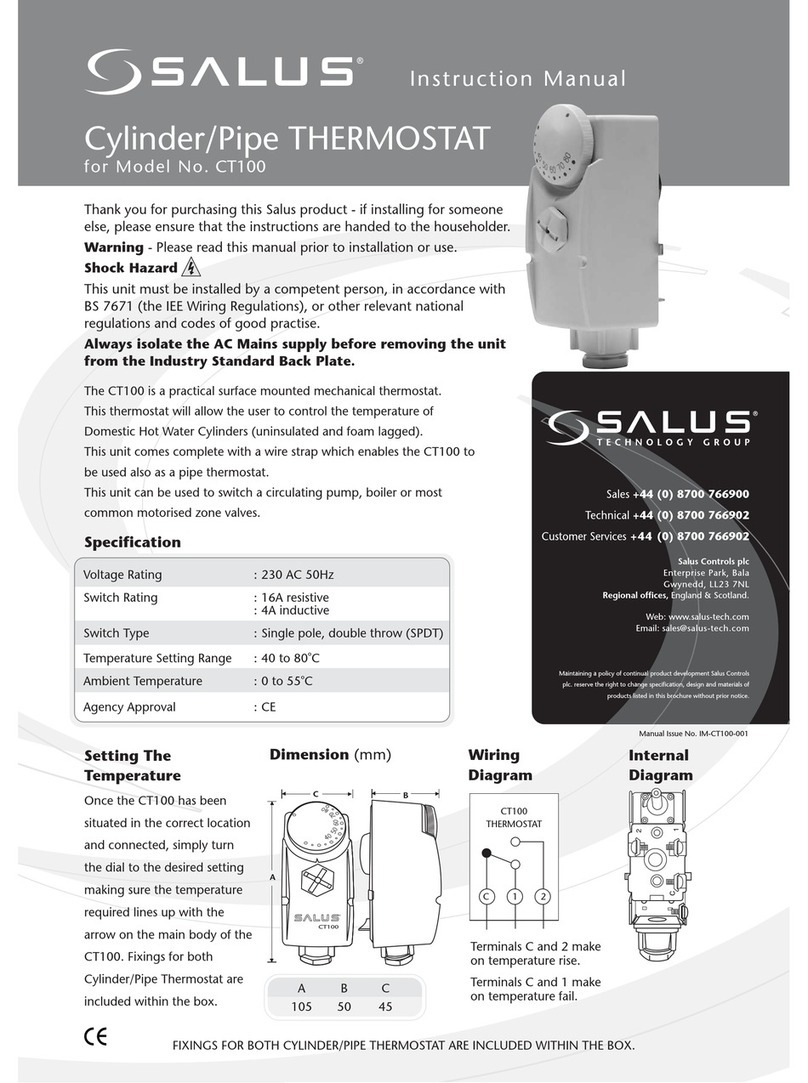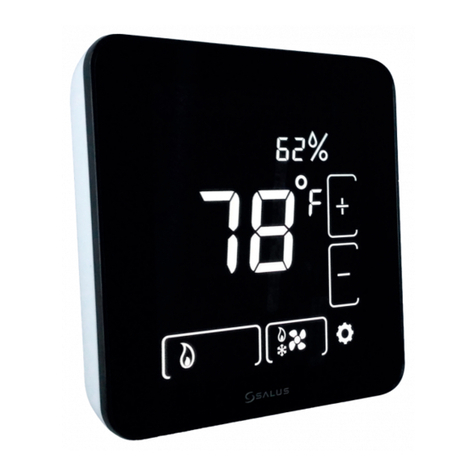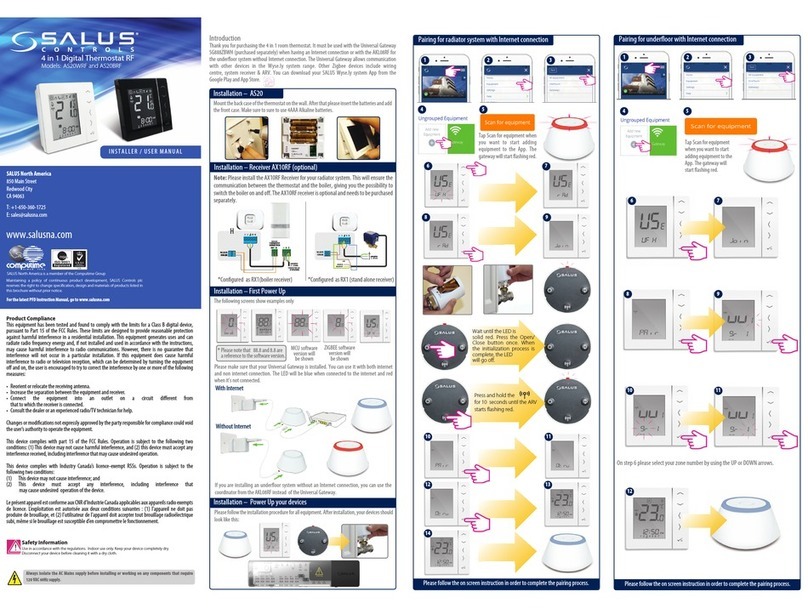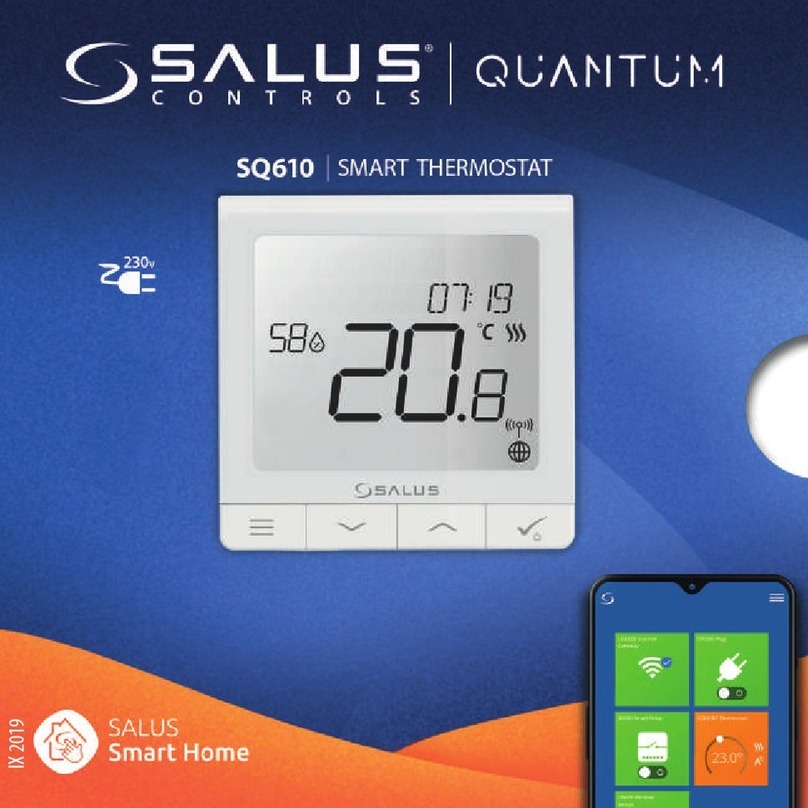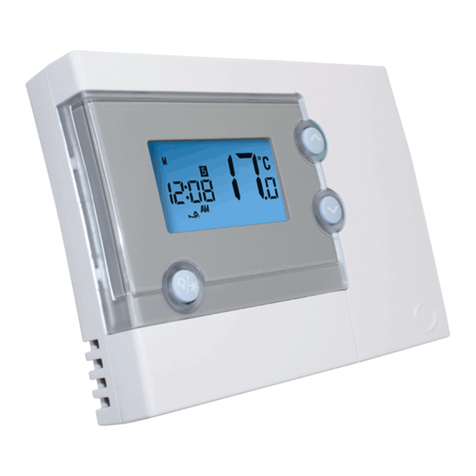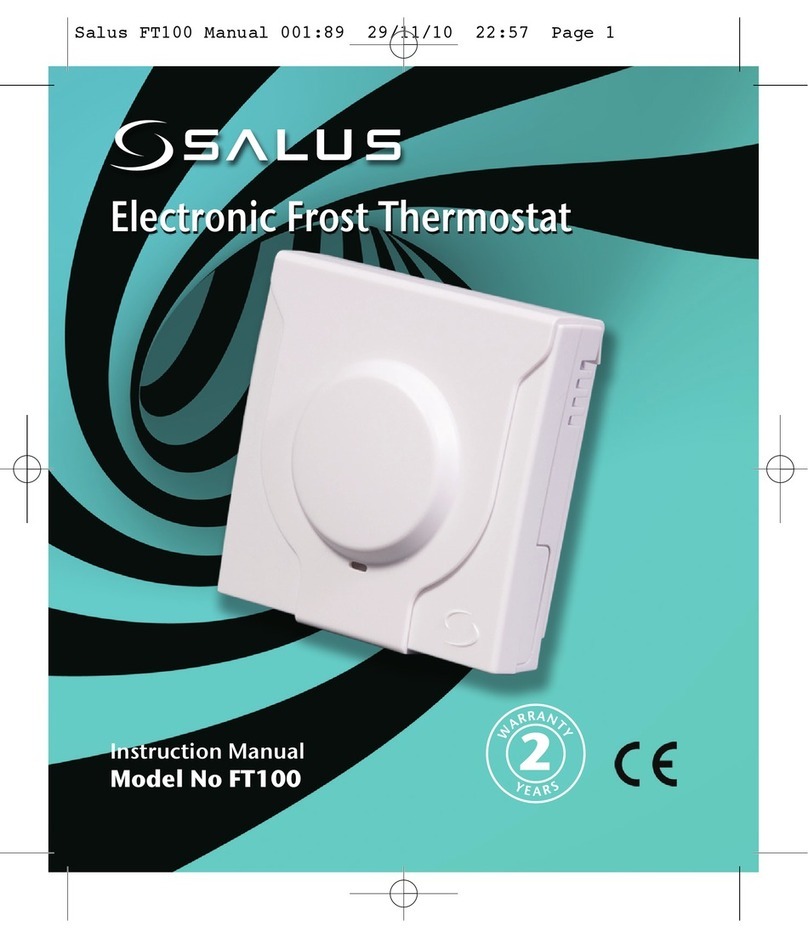PRODUCT COMPLIANCE
This product complies with the essential requirements
of the following EC Directives:
•Electro-Magnetic Compatibility
Directive 2004/108/EC
•Low Voltage Directive 2006/95/EEC
•EC Marking Directive 93/68/EEC
SAFETY INFORMATION
These instructions are applicable to the Salus Controls
model stated on the front cover of this manual only,
and must not be used with any other make or model.
These instructions are intended to apply in the United
Kingdom only, and should be followed along with any
other statutory obligations.
This accessory must be fitted by a Competent person,
and installation must comply with the guidance
provided in the current editions of BS7671 (IEE Wiring
Regulations) and Part ‘P’ of the Building Regulations.
Failure to comply with the requirements of these
publications could lead to prosecution.
Always isolate the AC Mains supply before carrying
out any work on the CT100 thermostat.
Please leave these instructions with the end user where
they should be kept in a safe place for future reference.
INTRODUCTION
The CT100 from Salus Controls is a practical surface
mounted mechanical thermostat. The thermostat can
be used to switch a circulating pump, boiler or most
common motorised zone valves.
The CT100 will allow the user to control the
temperature of Domestic Hot Water Cylinders (both
uninsulated and foam lagged), and is also supplied
with a wire strap which enables the unit to be used as
a pipe thermostat.
FEATURES
•Surface mounted
•Suitable for use on uninsulated
and foam lagged cylinders
•Easy temperature adjustment
•Dual use (cylinder or pipe thermostat)
INSTALLATION
Please read the important safety information at the
start of this manual before you begin to install the
device.
NOTE: All electrical installation work should be
carried out by a suitably qualified Electrician or
other competent person.
If you are not sure how to install this thermostat consult
either with a qualified electrician, heating engineer or
your boiler / heating system supplier for advice on how
to continue.
The CT100 thermostat should not be mounted in a
location where it will come into direct contact with
water, moisture or condensation. The location should
also be accessible for the connection of the control
wiring.
There are few electrical connections required to the
CT100, and these connections should be made to the
screw terminals on the front of the thermostat, as
indicated in the diagrams below:
Terminal Description Function
C Common Contact ---
1 Normally Closed Contact made when
Contact temperature drops
2 Normally Open Contact made when
Contact temperature rises
Earth ---
Fitting Location
When installed as a cylinder thermostat: The
recommended fitting location is approximately a
quarter of the way up from the bottom of the cylinder
– if the thermostat is to be mounted on a foam lagged
cylinder, a sufficient amount of insulation (to the depth
of the cylinder surface) must be removed to allow the
CT100 to be in contact with the cylinder.
When installed as a pipe thermostat: The CT100
thermostat should be located as near to the
temperature source to be controlled as possible,
typically not more than 0.6 metres from the boiler.
OPERATION
The CT100 thermostat switches on and off the heat
supply from the boiler to the hot water cylinder. It
works by sensing the temperature of the water inside
the cylinder, switching on the water heating when the
temperature falls below the thermostat setting, and
switching it off once this set temperature has been
reached.
The CT100 thermostat has an easily adjustable, clearly
marked scale, and the temperature should normally be
set at between 60 ºC and 65 ºC. This temperature
setting is high enough to kill off any harmful bacteria in
the water - raising the temperature of the stored hot
water any higher will result in wasted energy and
increases the risk of scalding.
If your boiler has a control thermostat it should always
be set to a higher temperature than the cylinder
thermostat. In most boilers, a single boiler thermostat
controls the temperature of water sent to both the
cylinder and radiators, although in some there are two
separate boiler thermostats.
Turning a cylinder thermostat to a higher setting will
not make the water heat up any faster. How quickly the
water will heat up depends on the design of the
heating system.
CT100 INSTRUCTION MANUAL
2CT100 INSTRUCTION MANUAL
3CT100 INSTRUCTION MANUAL
4CT100 INSTRUCTION MANUAL
5CT100 INSTRUCTION MANUAL
6



